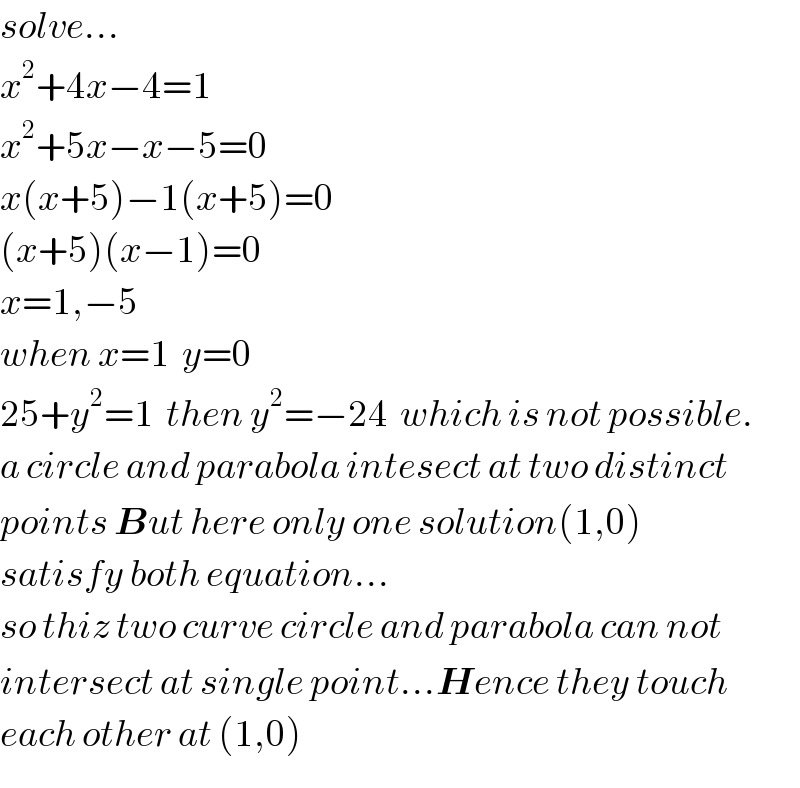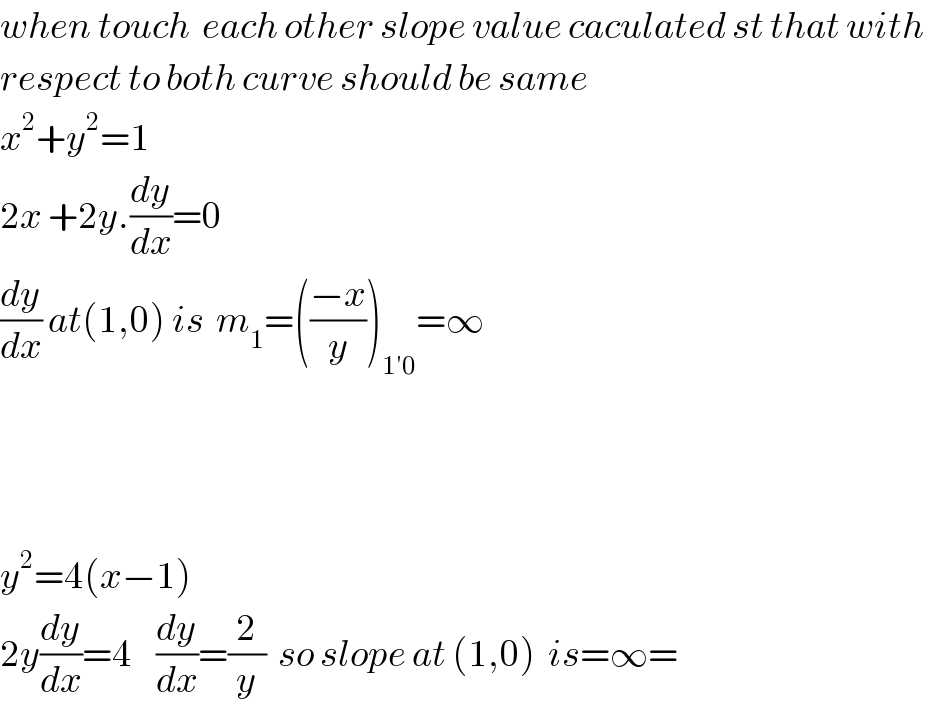
Question and Answers Forum
Question Number 39470 by Raj Singh last updated on 06/Jul/18

Commented by maxmathsup by imad last updated on 07/Jul/18

Commented by tanmay.chaudhury50@gmail.com last updated on 07/Jul/18

Answered by ajfour last updated on 06/Jul/18

Answered by tanmay.chaudhury50@gmail.com last updated on 07/Jul/18

Commented by tanmay.chaudhury50@gmail.com last updated on 07/Jul/18

